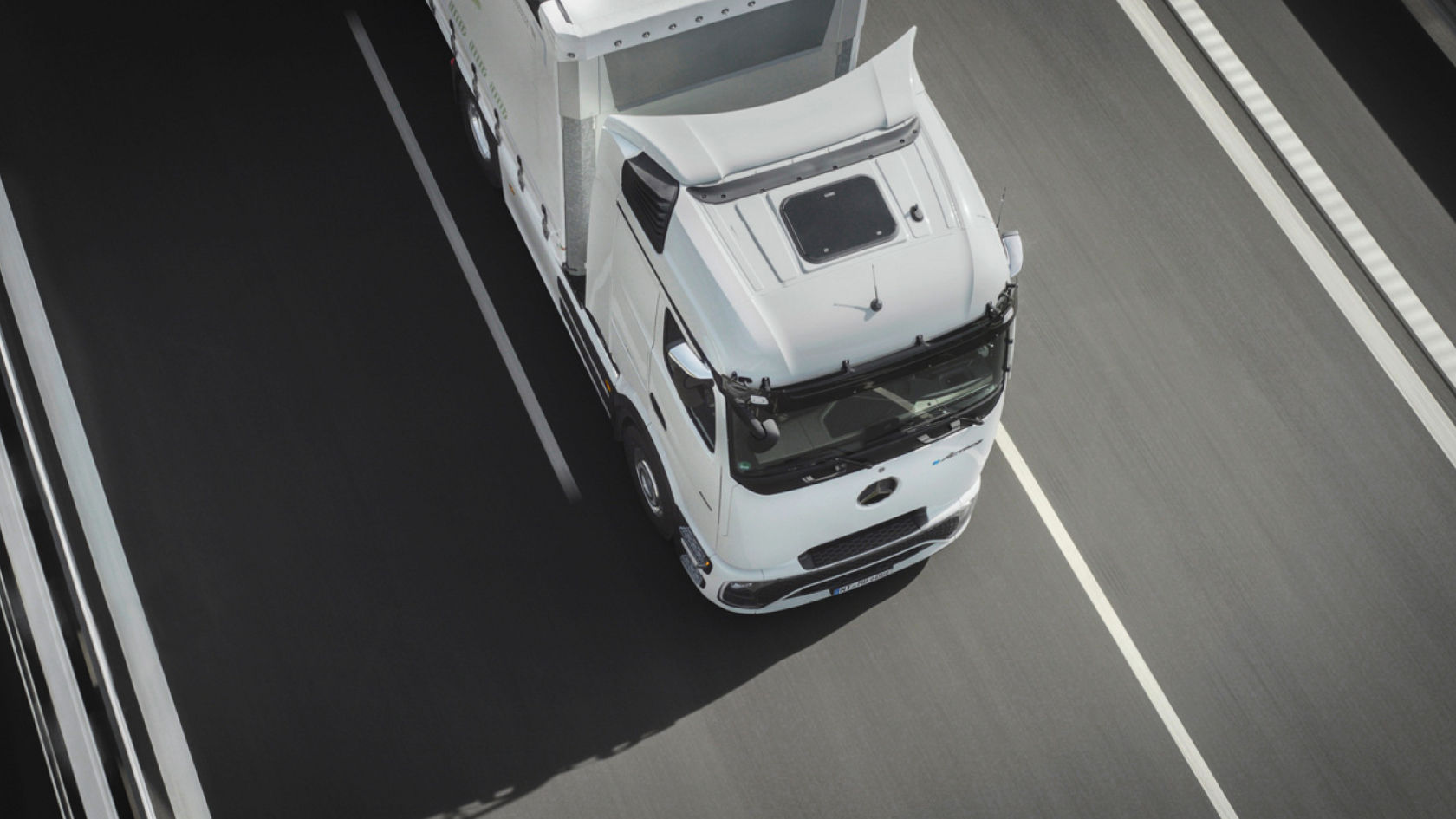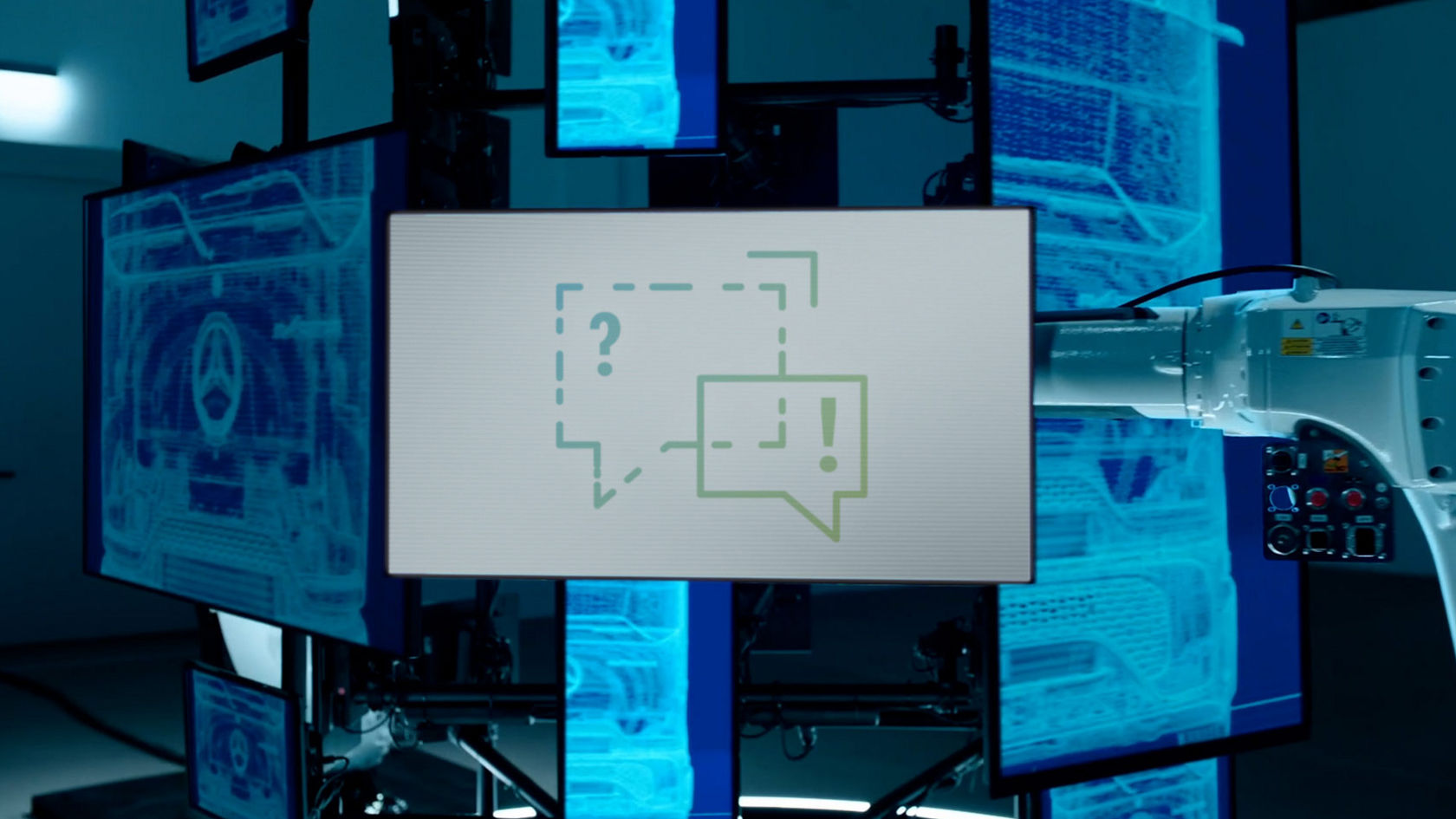
eConsulting
Jump-starting your eMobility.
Your entry into eMobility should not only pay off for the climate, but above all for your business. That’s why Mercedes‑Benz Trucks supports and accompanies you in the important steps of the transition. With eConsulting, specialised eConsultants will advise you on site – and find the right solution for your company. Your Mercedes‑Benz Trucks dealer will be happy to put you in touch with our eConsultants.
Find your nearest dealer here:
Needs assessment for your business.
First, our eConsulting team analyses the routes of your vehicles. The experts look at the determined energy requirements and available technology to establish what the right charging infrastructure looks like for your business and how it can best be implemented. Overnight charging at your depot or on-the-go at the loading ramp? How many charging stations? How much charging capacity? Is the existing mains connection sufficient? Does the network operator have to be activated? We find the answers.


Clear cost analysis.
We calculate – you decide: After the route analysis and planning of your charging infrastructure, the costs for your transition steps will be analysed. To this end, potential subsidies such as grants or tax breaks are also identified. You can then evaluate the cost-benefit ratio for yourself – and make decisions. We would be happy to support you in applying for funding opportunities.
Jump starting your eMobility.
eMobility at last! After analysis and planning comes implementation and integration into your operations. Comprehensive training programs are available to support this, for example, on battery-saving driving, improved charging on the road, handling high-voltage systems and the new charging management software. Making eMobility a success story for you.


Charging solutions
Just fill up with electricity.
The transition made easy. Our consultants take care of all necessary steps to make sure that you get the right charging solution for your eTrucks from demand calculation to turnkey charging infrastructure. These are provided by our partners. And our Charge Management System then makes charging easy and efficient.
Charging solutions
Just fill up with electricity.
Support for all relevant steps.
From connection to the power grid to charging management: We will be by your side. We determine which infrastructure you need or which software is required based on the use of your vehicles. And if your connection needs to be expanded by the grid operator as a result of the new, additional demand for electricity: we will be happy to help you.
Everything always in view.
Fleetboard Charge Management gives you control over your charging stations, the charging processes and the state of charge of your eTrucks. This allows you to find potential for improvement, develop charging routines and fine-tune the charging processes to suit your operation procedures.
On-time start with advance preparation.
Planning and installing the charging infrastructure at your site takes time, from 3 months in the best case scenario to 24 months for extensive work. Sometimes the grid connection needs to be extended, and this in particular can be a lengthy job. This means that advance preparation and early inclusion of grid operators are important for making a quick transition to eMobility. Our eConsultants take care of the ongoing coordination between the parties involved, ensuring that the process runs smoothly.
Strong partners by your side.
Your modern eTruck requires a modern charging infrastructure. To this end, we work together strategically with various partners. Together, we support you with planning, construction and maintenance.

Route planner
Forge ahead.
What's next: simulate your routes with eTruck Ready, taking traffic, weather and load into account. And find out whether the range of the eActros 600 suits your individual requirements.

You may also be interested in:

Ready for tomorrow, today

Charged to change

What moves you
The images and texts may include accessories and special equipment which do not form part of the standard specifications. The images shown must be considered examples only and do not necessarily reflect the actual state of the original vehicles. The appearance of the original vehicles may differ from these images. The manufacturer reserves the right to make changes without notice. Images and texts may refer to models and assistance services that are not available in some countries.


